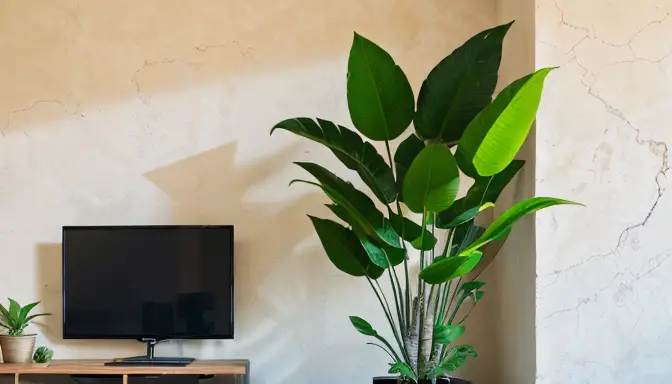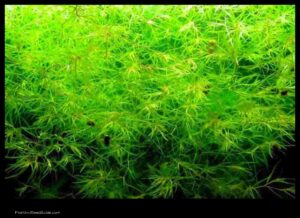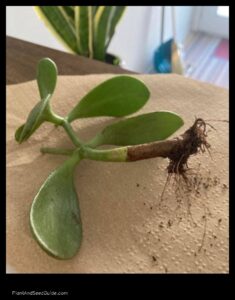Have you ever wondered how long a ZZ plant can survive without water? The resilient ZZ plant, also known as Zamioculcas zamiifolia, is a hardy houseplant known for its ability to withstand periods of drought. Understanding the characteristics of the ZZ plant and the factors that influence its water needs is essential for ensuring its longevity.
When it comes to the water requirements of a ZZ plant, factors such as plant size and maturity play a significant role. Larger and more mature ZZ plants have higher water requirements compared to younger ones. Additionally, seasonal variations can impact how often a ZZ plant needs to be watered, with higher water needs during the growing season.
Visual cues such as wilting and yellowing leaves are indicators that a ZZ plant is in need of water. Monitoring the soil moisture levels is crucial in preventing dehydration and maintaining the health of your ZZ plant. If you notice signs of dehydration, it’s essential to take action promptly to revive your plant.
Understanding the ZZ Plant
The ZZ plant, also known as Zamioculcas Zamiifolia, is a popular choice for indoor plant enthusiasts due to its unique appearance and low maintenance requirements. This hardy plant is characterized by its glossy, dark green leaves that grow in a graceful, wand-like shape. The ZZ plant is renowned for its resilience in surviving periods of drought, making it an ideal option for busy individuals or those with a tendency to forget watering schedules.
One of the key factors that contribute to the ZZ plant’s ability to thrive with minimal water is its rhizomes, which store moisture and nutrients for extended periods.
These underground stems act as a reservoir, allowing the plant to withstand drought conditions without compromising its health..

Factors Affecting Water Needs
When it comes to the water needs of a ZZ plant, various factors come into play that can influence how long this resilient plant can survive without water. Understanding these factors is crucial in ensuring the well-being and longevity of your ZZ plant.
One of the primary factors that affect a ZZ plant’s water requirements is its size and maturity. Larger and more mature ZZ plants typically have a higher tolerance for drought conditions compared to younger plants. Their developed root systems can store more water, allowing them to withstand longer periods without being watered.
Seasonal variations also play a significant role in determining how often you need to water your ZZ plant. During the warmer months when the plant is actively growing, it may require more frequent watering to support its growth. In contrast, during the colder months or periods of dormancy, the plant’s water needs decrease.
To ensure your ZZ plant remains hydrated, it is essential to monitor visual cues that indicate dehydration.
Additionally, regularly checking the moisture levels of the soil can help prevent dehydration and maintain the plant’s health.Wilting and yellowing leaves are common signs that the plant is in need of water..
If you notice your ZZ plant showing signs of dehydration, it is crucial to take immediate action to revive it. By adjusting your watering schedule, providing adequate moisture, and potentially repotting the plant in fresh soil, you can help your ZZ plant recover from being deprived of water for an extended period.
Plant Size and Maturity
When it comes to the size and maturity of a ZZ plant, these factors play a crucial role in determining its water requirements.
On the other hand, smaller or younger ZZ plants may have a limited water storage capacity, making them more sensitive to drought conditions.A larger and more mature ZZ plant will generally have a more extensive root system, allowing it to store more water and withstand longer periods without being watered..
Additionally, the size of the pot in which the ZZ plant is placed can also impact its water needs. A larger pot will provide more space for root growth and water retention, while a smaller pot may lead to quicker drying out of the soil. Therefore, it’s essential to consider the plant’s size, maturity, and pot size when determining how long it can survive without water.
Seasonal Variations
When it comes to the watering needs of a ZZ plant, seasonal variations play a significant role in determining how long this resilient plant can survive without water.
On the other hand, in the cooler months or winter season, the plant’s growth slows down, leading to reduced water consumption.During the warmer months, the ZZ plant tends to require more frequent watering due to increased evaporation rates and higher temperatures..
Moreover, seasonal changes can impact the amount of natural light the ZZ plant receives, affecting its overall water requirements. For instance, during the summer when days are longer, the plant may need more water to support its growth and metabolic processes. In contrast, in the winter when daylight hours are shorter, the ZZ plant may enter a dormant phase, requiring less water.
Signs of Dehydration
When it comes to caring for your ZZ plant, it’s crucial to be able to recognize the signs of dehydration.
Let’s dive into the visual cues that signal your ZZ plant is in need of water.These indicators can help you take action before it’s too late and revive your beloved plant..
- Wilting Leaves: One of the most apparent signs of dehydration in a ZZ plant is when its leaves start to wilt. They may appear droopy and lack their usual firmness.
- Yellowing Leaves: Another common indicator is the yellowing of leaves. This discoloration can signal that the plant is not receiving enough water to sustain its health.
Monitoring the soil moisture levels is also essential in preventing dehydration. By regularly checking the moisture content of the soil, you can ensure that your ZZ plant is receiving the hydration it needs to thrive. Remember, a hydrated ZZ plant is a happy ZZ plant!
Wilting and Yellowing Leaves
Wilting and yellowing leaves are common indicators that a ZZ plant is suffering from dehydration.
This is a clear sign that the plant is not receiving enough water to maintain its structural integrity. Additionally, yellowing leaves suggest that the plant is under stress and may not be able to absorb nutrients efficiently. These visual cues should alert you to the fact that your ZZ plant needs immediate attention to prevent further damage.When the leaves of a ZZ plant start to wilt, they lose their turgidity and appear droopy..
Soil Moisture Levels
When it comes to the health of your ZZ plant, monitoring soil moisture levels is crucial. Proper soil moisture is essential for the plant’s growth and overall well-being. Here are some key points to consider:
- Frequency of Watering: ZZ plants prefer to dry out between waterings. Check the soil moisture by inserting your finger into the soil about an inch deep. If it feels dry, it’s time to water.
- Well-Draining Soil: Use a well-draining potting mix to prevent waterlogging, which can lead to root rot. Adequate drainage will help maintain the right balance of moisture.
- Avoid Overwatering: Excess water can suffocate the roots and cause the plant to wilt. Ensure that the soil is damp but not waterlogged.
By keeping a close eye on the soil moisture levels and following these guidelines, you can help your ZZ plant thrive and avoid the perils of dehydration.

Reviving a Dehydrated ZZ Plant
When it comes to reviving a dehydrated ZZ plant, prompt action is crucial to save the plant from irreversible damage. The first step is to carefully assess the extent of dehydration by checking the soil moisture levels and the overall condition of the plant. Once dehydration is confirmed, follow these steps to bring your ZZ plant back to life:
- Rehydrate the Soil: Thoroughly water the plant, ensuring that the soil is evenly moist but not waterlogged. Allow excess water to drain out to prevent root rot.
- Prune Damaged Leaves: Trim any severely wilted or yellowed leaves to encourage new growth and redirect the plant’s energy towards recovery.
- Adjust Light and Temperature: Place the ZZ plant in a location with indirect sunlight and stable temperatures to reduce stress on the plant as it recovers.
- Monitor Progress: Keep a close eye on the plant’s progress, looking for signs of improvement such as new growth and increased vitality.
By following these steps and providing proper care, you can successfully revive a dehydrated ZZ plant and help it thrive once again.
Frequently Asked Questions
- How often should I water my ZZ plant?
The frequency of watering your ZZ plant depends on various factors such as the size of the plant, environmental conditions, and the season. It is important to allow the top inch of the soil to dry out between waterings to prevent overwatering.
- Can a ZZ plant survive without water for a long time?
Yes, ZZ plants are known for their ability to survive extended periods without water due to their succulent rhizomes that store moisture. However, prolonged dehydration can lead to wilting and yellowing leaves, so it is essential to monitor the plant’s hydration levels.
- How do I revive a dehydrated ZZ plant?
If your ZZ plant shows signs of dehydration, you can revive it by thoroughly watering the soil and ensuring proper drainage. Trim any yellow or withered leaves and place the plant in a location with indirect sunlight to aid in its recovery.
- Wild Rose Country: Exploring Untamed Beauty - July 15, 2024
- Wildflower Nursery Decor: Bringing Nature Indoors - July 15, 2024
- Young Sprout of Grass: Nurturing New Life - July 15, 2024








